The Santiago Fire has moved up into the mountains, raging through the Cleveland National Forest. The canyons are still under evacuation, but out here in the Saddleback Valley, it just looks like a really smoggy day. With yellower-than normal sunlight. It was actually cold this morning, for the first time in well over a week.
Things were just clear enough at home last night that we opened the windows for about an hour to air the place out. Then the smell of smoke started drifting in again.
Because there hasn’t been much to see since Thursday, I haven’t been taking as many photos. So instead I’ll point you to a couple of nighttime photos I found on Wikipedia’s article on all the fires. The one on the left is a view from Aliso Viejo across the valley (the Washington Mutual building at the lower left is half a block from the comic store I frequent) by Wikipedia user Bighead. The one on the right is a view from Mission Viejo by Kevin Labianco. His other photos on Flickr are worth looking at as well.
 The OCFA has posted a nice map showing the progression of the fire. Since they replace their maps every day or so, the thumbnail links to a local copy of the map. (via AerynCrichton)
The OCFA has posted a nice map showing the progression of the fire. Since they replace their maps every day or so, the thumbnail links to a local copy of the map. (via AerynCrichton)
I’ve noticed people starting to speculate on terrorism as a possible cause of the fires, because it’s awfully suspicious that they’d all break out at once. Well, no, actually: it isn’t suspicious at all. Southern California is a very dry region. It rains in the winter (well, usually), then dries out in the summer. By the end of summer, the grasslands and brush are basically tinder. Then the Santa Ana winds blow in, usually in October: high speed, high temperature, low humidity. They dry things out even further, spark power lines, and once a fire has started (by arson, accident, etc.), make it spread rapidly. To make matters worse, there’s that drought I mentioned last week.
So if conditions are ideal (so to speak) for fire in one place, they’re usually ideal all over the region. We get wildfires every year, often two or three at once. They don’t get the headlines when they’re out in the wilderness, only when they encroach on cities and homes. And sometimes, when conditions are really bad, we get massive fires across the region. It’s happening now, it happened in 2003 (with the Cedar Fire being the largest), it happened in 1993 (the nearby Laguna Beach fire being only one of several).
In short, California burns regularly. People can help that process along, but it happens. Could terrorists have started some of the fires? (So far, only the Santiago Fire has been identified as arson.) Possibly. But it’s hardly the most likely explanation.
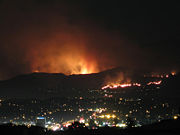
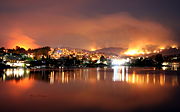
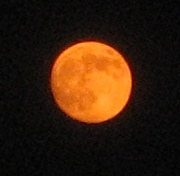 I ended up leaving the office after dark, giving me a chance to take some pictures of the orange moon (it was actually a bit past first quarter
I ended up leaving the office after dark, giving me a chance to take some pictures of the orange moon (it was actually a bit past first quarter 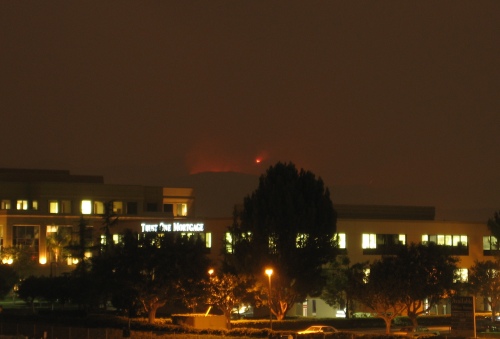

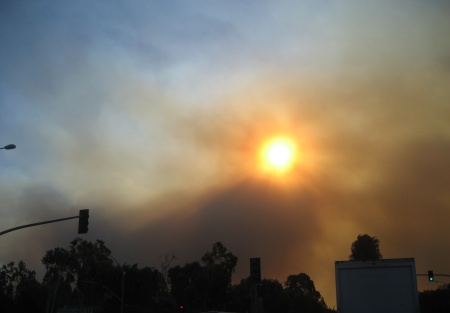
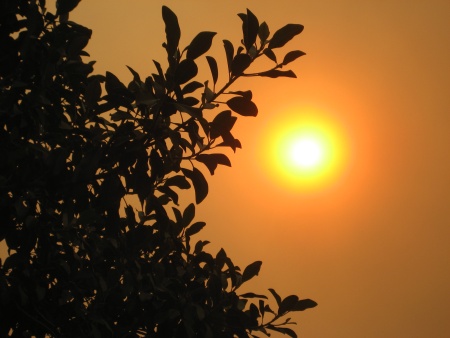
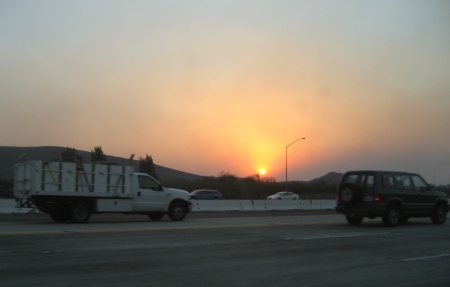
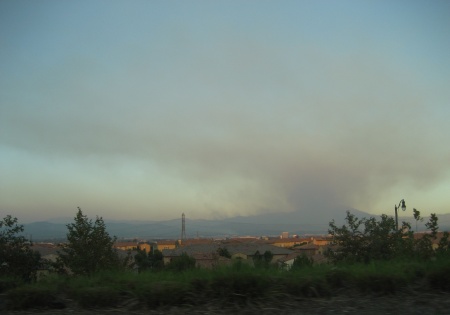

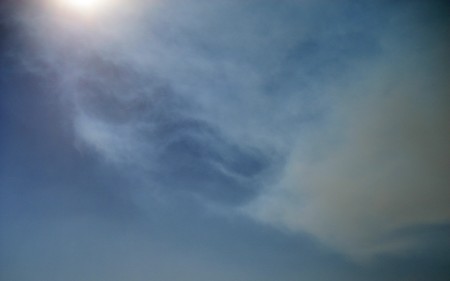
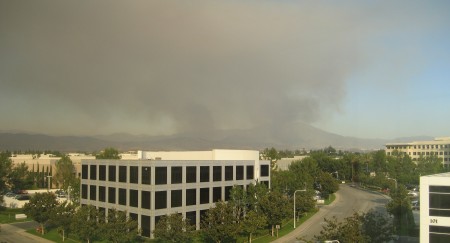



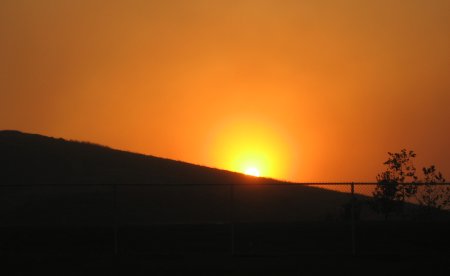
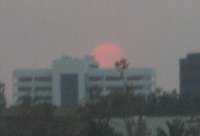 As it neared the horizon, dipping deeper into the layer of smoke, it turned almost purple, and was dim enough to look at directly. (Not that I stared—I’ve seen
As it neared the horizon, dipping deeper into the layer of smoke, it turned almost purple, and was dim enough to look at directly. (Not that I stared—I’ve seen